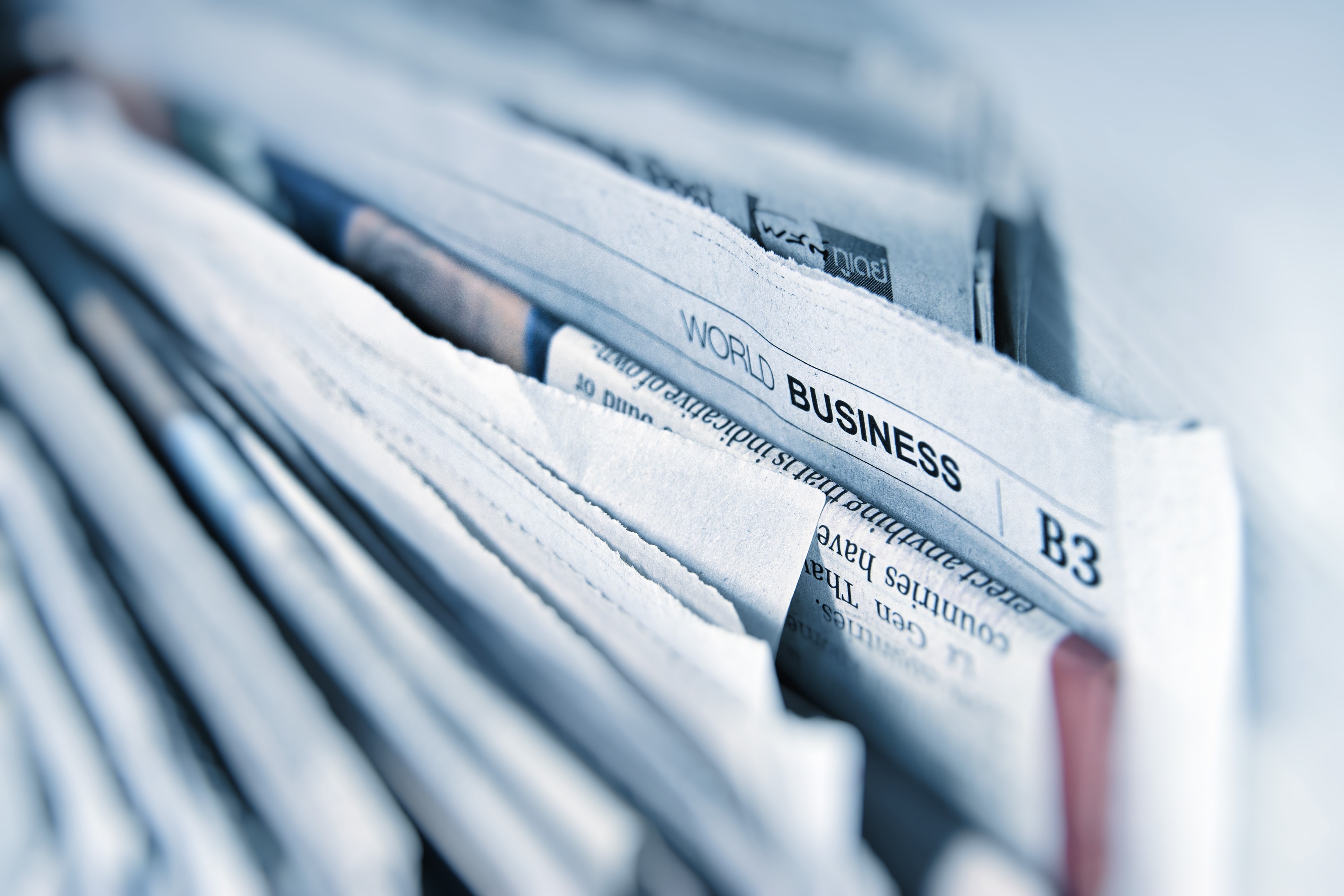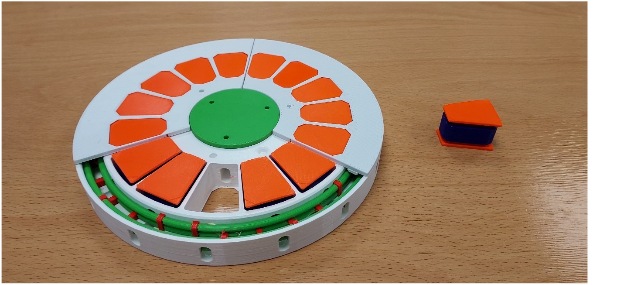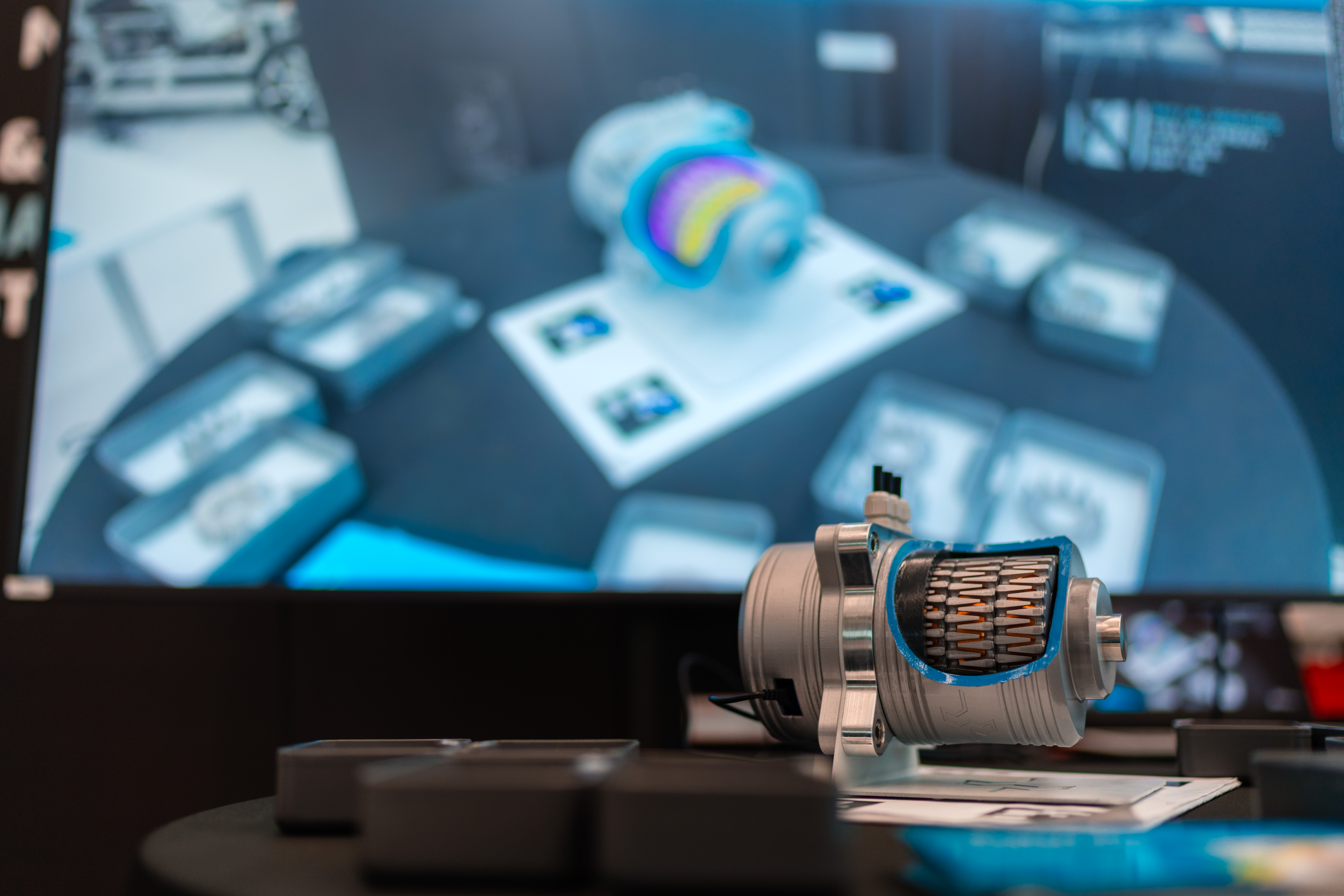The Innovation Campus Mobility of the Future (ICM) and its partners are delivering results that make future mobility applications significantly more sustainable, extending far beyond the traditional product lifecycle. Sustainability is a process that begins with resource-efficient production and encompasses efficient operation, easy repair, and recycling. "The ICM partners are also working on additive-subtractive manufacturing solutions that significantly enhance mobility and production technologies," explains Dr. Sandra Kauffmann-Weiß, Managing Director of ICM. With the future of mobility being electric, the focus is on cutting-edge technologies such as axial and transverse flux motors as well as fuel cells.

The New Dimension of Electric Motor Manufacturing
At Formnext 2024 in Frankfurt am Main, researchers from ICM are demonstrating that industrial 3D printing is a key component of sustainable mobility for the future. Among their highlights is an axial flux machine designed for an additive-subtractive system that can be opened, disassembled, and repaired. They are also showcasing a transverse flux machine, where additive manufacturing enables innovative designs that reduce eddy currents, thereby increasing efficiency. Learn more about the ten ICM projects being presented at the trade fair in Hall 12, Booth D39.
Remanufacturing Process for Electric Motors
In the Restore project, five institutes from KIT and the University of Stuttgart have developed a remanufacturing process chain for repairing and modifying hybrid polymer components—demonstrated using an axial flux machine and its parts. The researchers designed the motor to be easily modifiable and repairable.
This task is carried out by a multifunctional production system whose hardware and software components have been significantly advanced by the project partners. The system features grippers, 3D scanners, milling tools, sensors, an industrial robot, and an additive-subtractive 4K FFF (Fused Filament Fabrication) module. By integrating various manufacturing principles, the system can open, disassemble, repair, modify, and reassemble the axial flux machine.
Successfully implemented remanufacturing processes enable the repair of products, extend their service life, and promote sustainability beyond production and operation.

Additive-Subtractive Design Diversity Reduces Eddy Currents
Additive-subtractive manufacturing processes open up entirely new design possibilities that significantly enhance the efficiency of electric motors. Researchers from KIT and the University of Stuttgart have demonstrated this in several ICM projects using transverse flux machines as a case study. Through topology optimization and the targeted incorporation of slits and grids, they developed stator half-shells manufactured with additive-subtractive techniques, which greatly reduce eddy currents. This innovative design increases efficiency and improves thermal management. It enables the production of complex transverse flux machines that are not only more efficient but also achieve higher torque density and, consequently, greater performance. In addition to the stator half-shells from the FutureM project, the researchers are showcasing a sectional model of a transverse flux machine at the trade fair. Using digital visualization, the exhibit highlights the motor’s magnetic fields and current flows.

Innovative Laser Manufacturing Enhances Fuel Cell Efficiency
For the future of electromobility, improving the efficiency of energy carriers and converters is critical. Three institutes from KIT and the University of Stuttgart, through the ICM projects AddPEM and AddFlow, have demonstrated how innovative manufacturing processes can drive significant advancements in polymer electrolyte membrane (PEM) fuel cells. Their solution combines additive and subtractive laser processing to create flow-optimized channels in gas diffusion layers and bipolar plates. These precise and functional flow structures enhance gas distribution and water management, thereby increasing the overall efficiency of fuel cells. The Innovation Campus Mobility of the Future (ICM) will showcase these advancements and other research results in additive-subtractive manufacturing at the Hessian joint stand "Technologieland@Formnext": Hall 12, Booth D39. Visitors can explore a total of ten ICM projects presented by the partners.
Information about the ICM projects at Formnext 2024
- RESTORE: Remanufacturing Process Chain for Functional, Hybridized Polymer Components
- AddPEM: Additive manufacturing of graded flow structures for PEM fuel cells
- FutureM: Design and manufacture of customized multi-material components for future electric machines
- AniFoam: Development and analysis of an additive manufacturing method to produce anisotropic foam core structures with chemical liquid foams
- AddFlow: Flow-adapted components for fuel cells by additive-subtractive manufacturing with selectively adjustable surface function (hydrophobic, hydrophilic)
- KADDISH: cooling channels in additive manufactured cutting tools
- AddBroach: Sustainable production of near-net-shape semi-finished products by means of binder jetting
- RoTraCut: Non-Circular-Rotary-Turning of rotor shafts for electric traction drives
- EUVAM: Energy-efficient UV curing of glass fiber composites for the mobility sector
- AddXChange: Holistic qualification of copper for the binder jetting process with targeted porosity adjustment
- Naturstoff: Sustainable and efficient production of natural fiber-reinforced polymer composites
- HyStrukt: Structurally integrated H2 free-form storage tanks as stiffening elements in the mobility sector